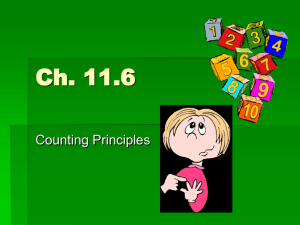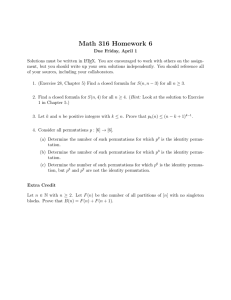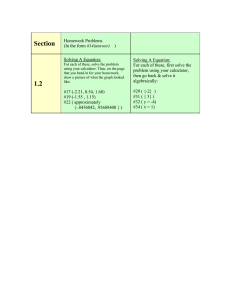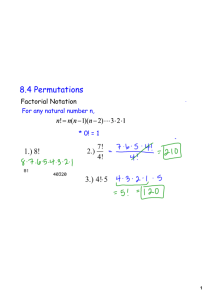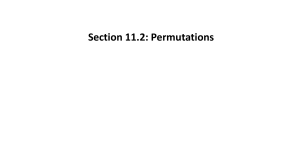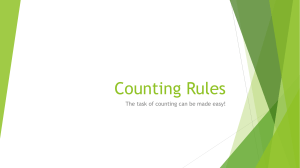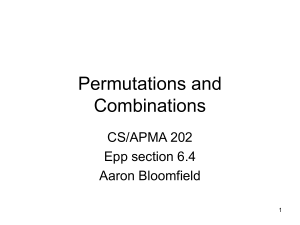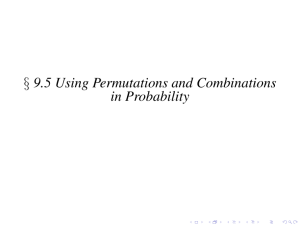Permutations:
advertisement
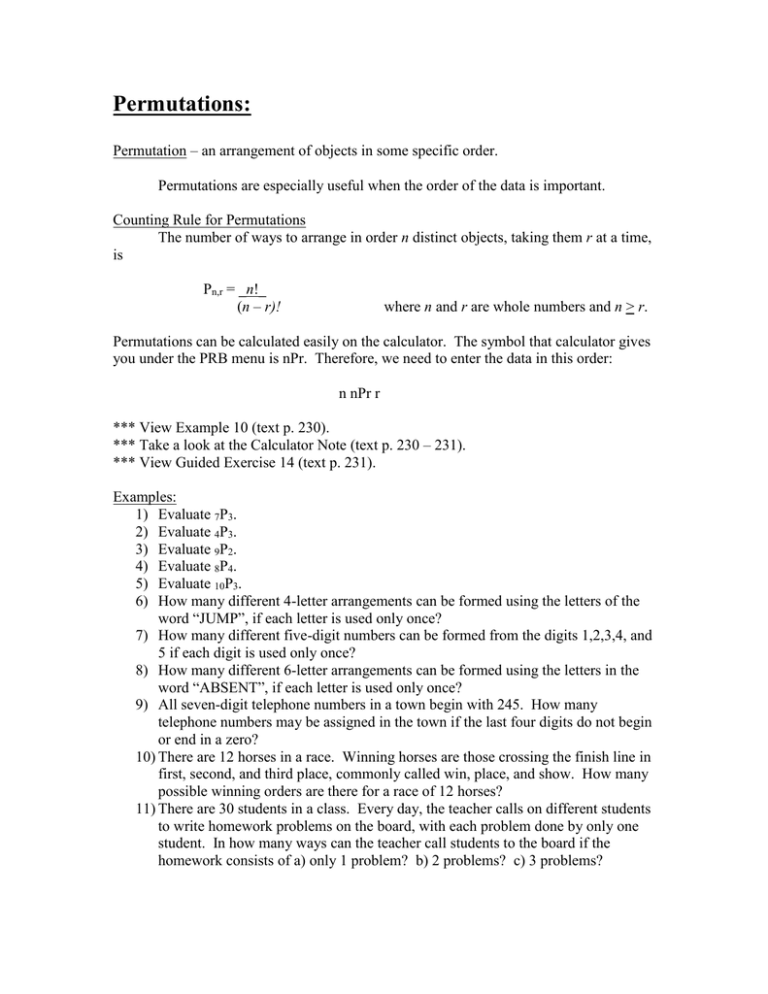
Permutations: Permutation – an arrangement of objects in some specific order. Permutations are especially useful when the order of the data is important. Counting Rule for Permutations The number of ways to arrange in order n distinct objects, taking them r at a time, is Pn,r = _n!_ (n – r)! where n and r are whole numbers and n > r. Permutations can be calculated easily on the calculator. The symbol that calculator gives you under the PRB menu is nPr. Therefore, we need to enter the data in this order: n nPr r *** View Example 10 (text p. 230). *** Take a look at the Calculator Note (text p. 230 – 231). *** View Guided Exercise 14 (text p. 231). Examples: 1) Evaluate 7P3. 2) Evaluate 4P3. 3) Evaluate 9P2. 4) Evaluate 8P4. 5) Evaluate 10P3. 6) How many different 4-letter arrangements can be formed using the letters of the word “JUMP”, if each letter is used only once? 7) How many different five-digit numbers can be formed from the digits 1,2,3,4, and 5 if each digit is used only once? 8) How many different 6-letter arrangements can be formed using the letters in the word “ABSENT”, if each letter is used only once? 9) All seven-digit telephone numbers in a town begin with 245. How many telephone numbers may be assigned in the town if the last four digits do not begin or end in a zero? 10) There are 12 horses in a race. Winning horses are those crossing the finish line in first, second, and third place, commonly called win, place, and show. How many possible winning orders are there for a race of 12 horses? 11) There are 30 students in a class. Every day, the teacher calls on different students to write homework problems on the board, with each problem done by only one student. In how many ways can the teacher call students to the board if the homework consists of a) only 1 problem? b) 2 problems? c) 3 problems?


